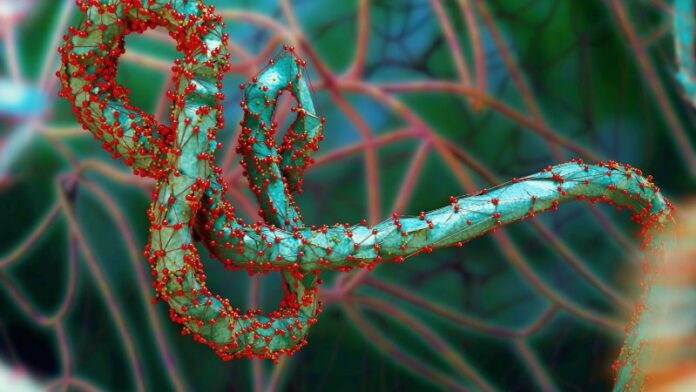Whenever we come across the term Ebola, we are dreadful with the thoughts of death and tragedy. Ebola virus disease or Ebola is a deadly disease caused by infection from a group of viruses. With the main culprit being the Ebola virus, other viruses responsible include Sudan, Reston and Bamboli viruses. A common question people have when hearing about Ebola is if it is only present in Africa.
Is Ebola Only In Africa? Why The Name Ebola?
The Ebola virus was discovered in Congo in 1976 with inhabitants living alongside the Ebola River, hence the name. The Ebola outbreak hit hardest Western Africa – countries like Guinea, Sierra Leone and Liberia suffered most from the epidemic. A fast spread of the disease was seen between the years 2014 to 2016 and 29,000 cases were reported with a loss of 11,300 lives. Keeping in view the widespread and hefty monetary losses as a result (286 million dollars lost by Sierra Leone), it can be concluded that Ebola has been the most badly affected in Africa.
Is It Common?
From a clinical point of view, Ebola is a rare infectious disease. We don’t see Ebola patients every day, but that doesn’t undermine the disease’s severity.
How Does The Virus Spread?
The virus was found inside African fruit bats and is believed to have been transmitted from animals to humans. The list of animals that may have caused the transmission includes monkeys, chimpanzees, gorillas and forest antelopes. Infected humans can transfer the virus to others via exchanging body fluids (saliva, sweat, semen, urine, etc.). Sharing utensils, needles and clothes with an infected person can land you at risk.
Signs And Symptoms Of Ebola
Once inside the body, the virus can cause these signs and symptoms:
- A high-grade fever
- Persistent headache
- Pains in muscles and joints
- Muscle weakness
- Cramps and pain in the stomach
- Diarrhea and vomiting
- Bleeding profusely
- A decrease in blood pressure (hypotension)
If you experience these symptoms and have had contact with infected people (or animals), get yourself tested immediately.
When Do The Ebola Symptoms Appear?
According to the Center for Disease Control And Prevention, symptoms start to appear within an average of 8-10 days after infection. However, some people have reported the symptoms as soon as 2 days post-infection, while some have shown nothing until 20 days. The average incubation period of the Ebola virus is 6 to 10 days.
A Clinical Explanation On How The Ebola Virus Causes Symptoms
Here is the impact of the virus on the body cells from a clinical point of view:
- Entry into the body
The Ebola virus gains entry into the body via breaks in the skin or through mucous membranes (membranes that line the mouth and anus)
- Cells affected
Once inside, it infects the cells of the defence system (monocytes and macrophages), liver cells (hepatocytes) and the lining cells of skin and vessels (endothelial and epithelial and cells of the adrenal cortex (hormone-producing glands)
- Spread of the virus within the body
The virus then spreads to the lymph nodes and decreases lymphocyte (white blood cells) count
- Impact of the infection and the result
The cells’ infection leads to the release of pro-inflammatory cells (cytokines), leading to fever and pains throughout the body
The infection of liver cells causes their death, which deranges the clotting factors in the body. A derangement of clotting factors results in subsequent bleeding, internal and external. The damage and death of liver cells, paired with adrenal cell damage, leads to multiple organ failure and shock
How Is Ebola Diagnosed?
The initial symptoms of Ebola resemble that of other dangerous (but not deadly) diseases. Ebola resembles malaria and typhoid fever, so ask your doctor asks for a blood test. These findings of your blood report will confirm the diagnosis to see if there is:
- Reduced levels of the white blood cells and platelets
- Deranged blood coagulation factors
- Elevated enzyme levels of liver
Treatment
The very first step is to isolate the infected person to avoid the spread to friends and family.
Treatment involves medication as well as giving importance to:
- Maintain blood pressure
- Rehydrate and revive electrolytes (via IV fluids and blood transfusions)
- Oxygen therapy can be used in cases of breathing issues
- Prophylactic antibiotics can be given to prevent the occurrence of any other infections
How Can You Protect Yourself?
These preventive measures can be adopted by the general public and health professionals to prevent the spread:
- Avoid contact with an infected person
- Adopt sanitizing and handwashing habits
- Wear protective clothes (PPE and glasses) while attending to the patient
- Refrain from participating in burial of infected patients
Ebola is a rare viral disease that spreads from infected individuals. The infirmity spreads through body fluids. Therefore care should be taken in dealing with infected patients. If you have the symptoms mentioned above, consult a physician immediately.
References
Briand, Sylvie, et al. “The international Ebola emergency.” New England Journal of Medicine 371.13 (2014): 1180-1183.
Feldmann, Heinz, and Thomas W. Geisbert. “Ebola haemorrhagic fever.” The Lancet 377.9768 (2011): 849-862.
CDC (2018,). Ebola (Ebola Virus Disease). [Weblog]. Retrieved 06 October 2020, from https://www.cdc.gov/vhf/ebola/outbreaks/index-2018.html





